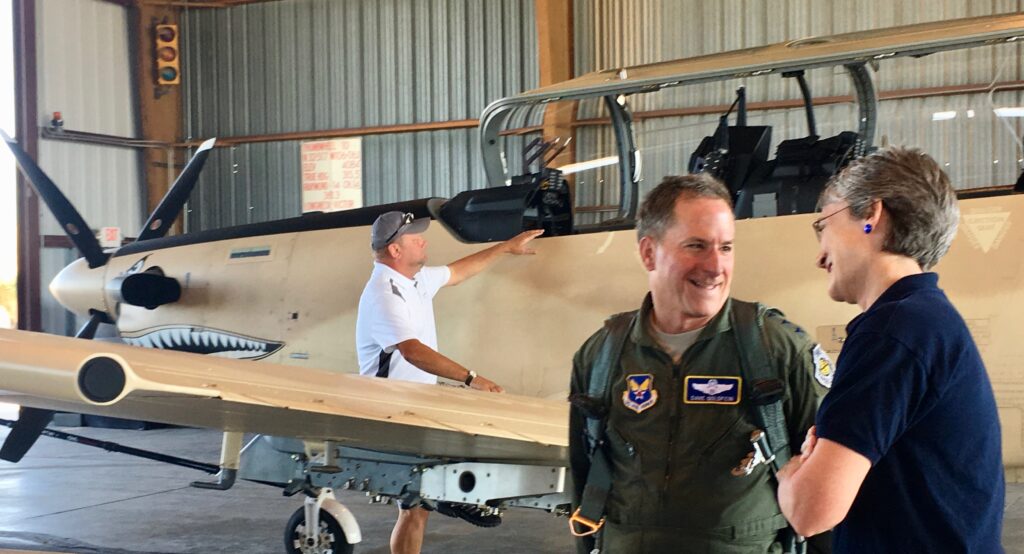SecAF: Don’t Expect Large Budget Increases After 2019; $2.4B Set For Light Attack
Posted on

Heather Wilson, Air Force Secretary
CAPITOL HILL: The Air Force placed a $2.4 billion placeholder in the 2019 budget to buy Light Attack aircraft over the next five years, Air Force Secretary Heather Wilson told reporters this morning.
The service does not plan to buy planes in 2019 but to work with allies to build Concepts of Operations and hone the number of planes both allies and the United States should buy. Then the service will nail down how many to buy and when to buy them, she told us after a Mitchell Institute breakfast.
The Air Force decided to forgo spending $100 million on a combat experiment in 2019 and further test Textron’s AT-6 and the Sierra Nevada/Embraer A-29. (Long-time Breaking Defense readers will recall this has been going on since 2011: Here’s our comparison of the two planes.) These won’t be just counterinsurgency aircraft toting guns and missiles. Wilson said they’d be consider equipping them with a wide range of sensors.
While she wasn’t specific, it would make sense for them to try electro-optics, electronic warfare, signals intelligence and AESA radar (which can also be used for EW and cyber) and to mix them up. Of course, one of the limitations of smaller propeller aircraft is they don’t generate as much electrical power as a jet fighter does. Wilson also made a point of saying the aircraft would have to be able to network with other planes and with the ground.

Air Force Chief of Staff Gen. David Goldfein and Secretary Heather Wilson at Holloman AFB for the Light Attack Experiment.
Why would the service that flies F-22s want to buy slow-moving, fairly vulnerable propeller aircraft? Wilson put the case well: “We should not use F-22s to destroy a narcotics factory in Afghanistan.”
Wilson clarified another of other budget issues, including why the service killed the JSTARS recap program. Breaking D readers know the primary reason was that it just won’t survive a real war war, plus it’s fulfilling only 5 percent of commander’s requirements. But the broader reason is that a government-funded thinktank (an FFRDC) studied JSTARS for Air Combat Command and said there were much better ways to do more than what this once-revolutionary capability now does, Wilson said.
It also reflects a change in approach to how we gather information about friendly and enemy forces and how we share that information. It’s an approach that “is conceptually similar to MDC2,” the secretary told me, but it did not derive from the ECCT run by Brig. Gen. Chance “Salty” Saltzman. As Breaking D readers better than any other group of humans outside the Air Force, Multi Domain Command and Control (MDC2) is a system the Air Force wants to build, a single global network linking forces in the air, sea, land, space, and cyberspace. So the new battle management system to replace JSTARS will be similar in that it takes data from a wide array of sources. How it’s different will require more information from the Air Force.
Finally, Wilson made a bold statement about the 14 percent spending increase recently passed by Congress for fiscal 2018 and 2019, one that bears spreading and remembering: “We can’t expect that this rate of increase will continue.” Given the chances America will experience much larger deficits and growing inflation over the next three to five years, these words may prove prophetic.
Subscribe to our newsletter
Promotions, new products and sales. Directly to your inbox.
